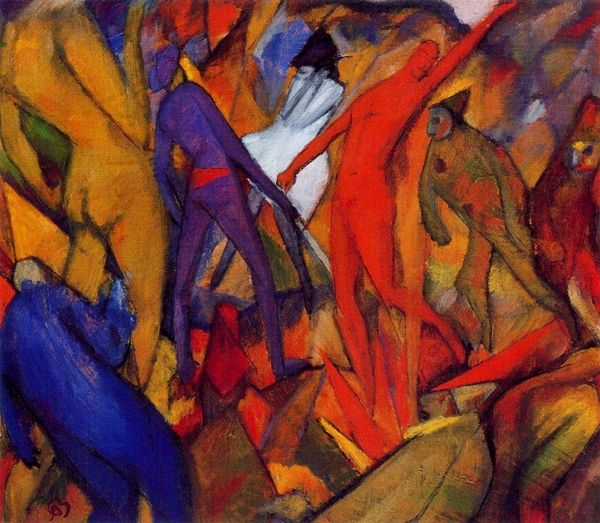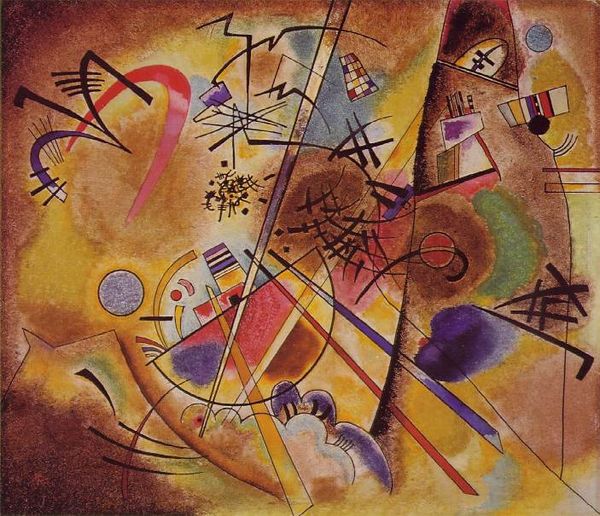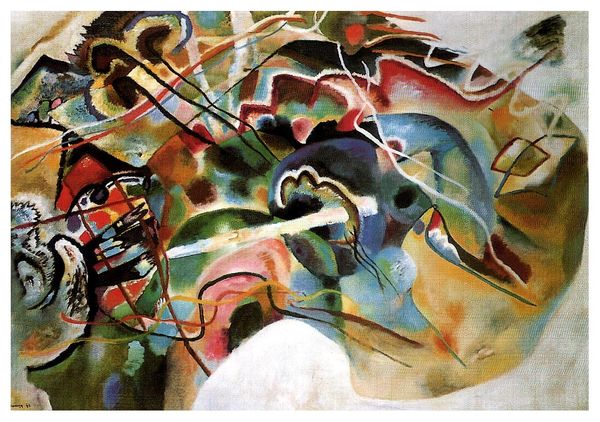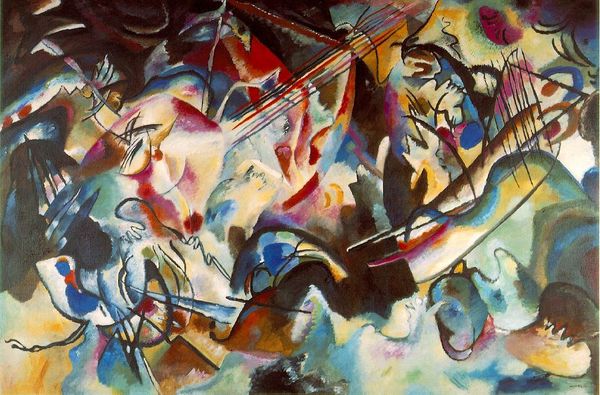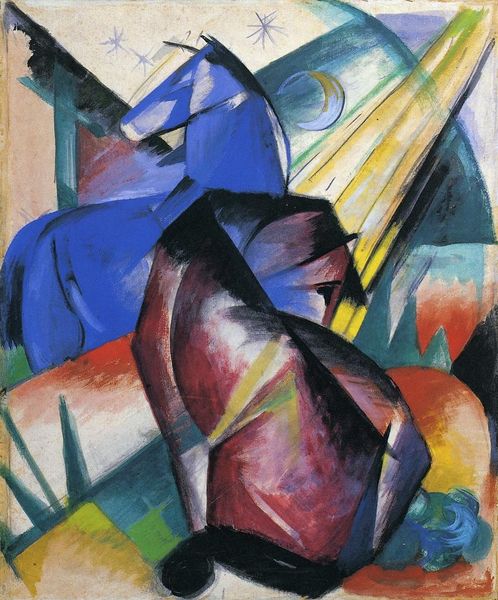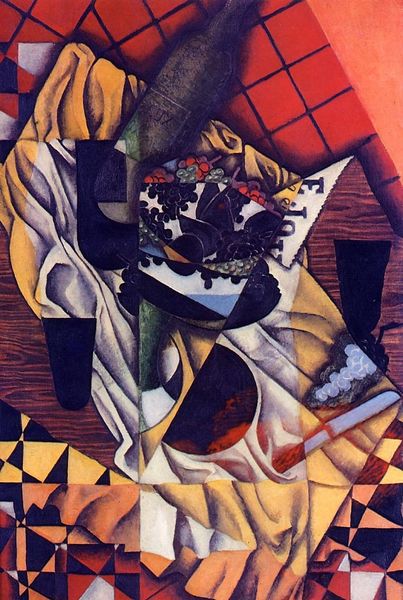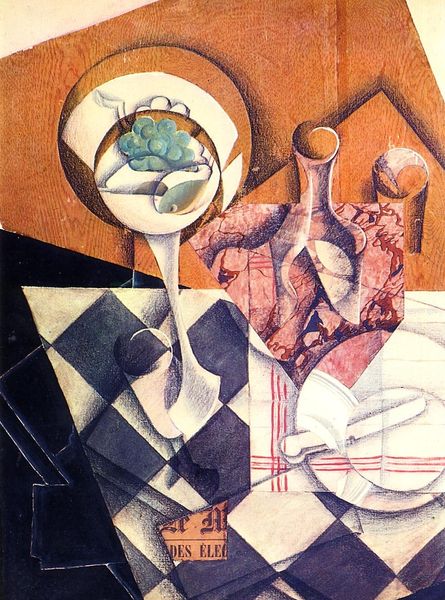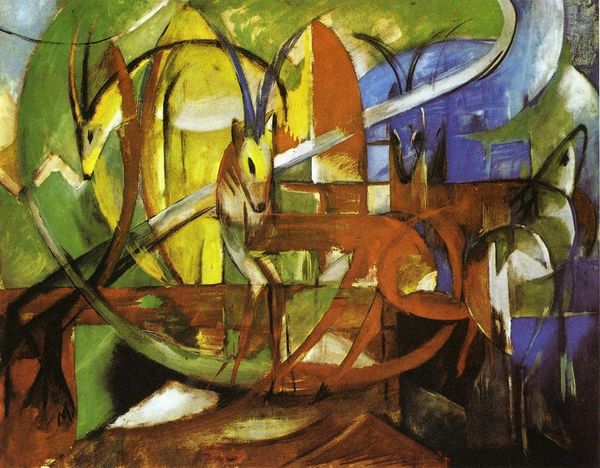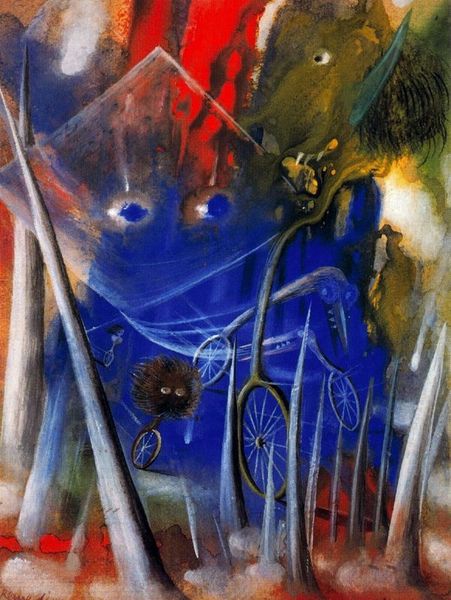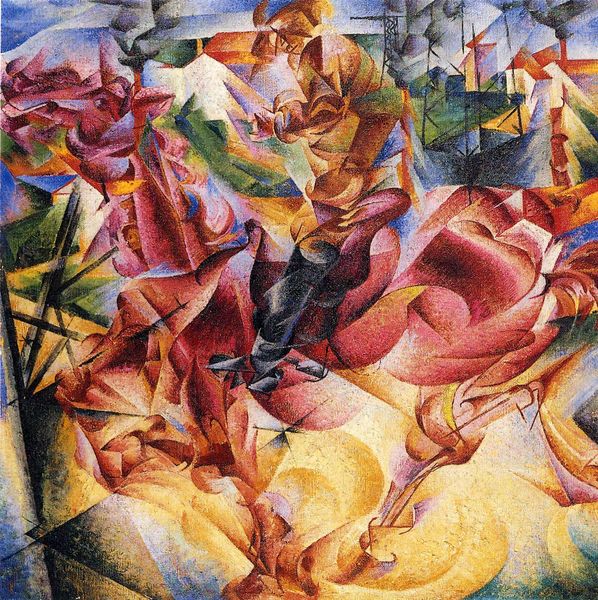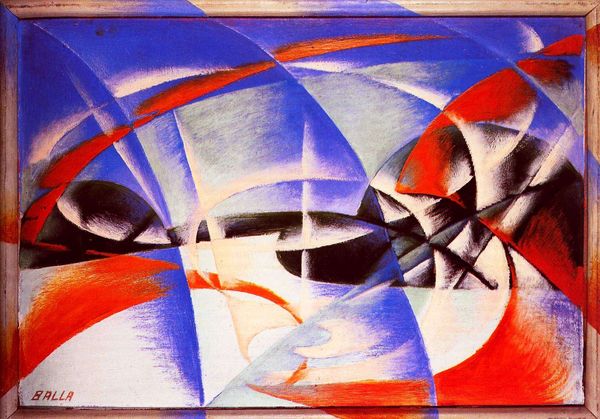
Copyright: Esteban Frances,Fair Use
Curator: We’re standing before "The Dream," a tempera on canvas painting created in 1938 by the Spanish-French artist Esteban Frances. Frances was working in the Surrealist mode during this period. What strikes you first? Editor: Disquiet. A fragmented world rendered in washed-out yet feverish hues. It’s like peering into a disturbing, half-remembered scene. Curator: Absolutely. Frances was engaging with a broad avant-garde milieu and became particularly focused on dream imagery. It’s an intimate glimpse into personal symbolism against the backdrop of escalating global tensions. Do the objects give you a sense of meaning? Editor: The recurring forms remind me of the human anatomy studies, the elongated figures, the bulbous masses. They seem trapped or restrained, especially by that fractured grid. What do those lines symbolize to you? Curator: I find it interesting that he uses the linear, hard-edged form to divide and almost imprison the organic forms. Consider that 1938 was on the eve of World War II and Surrealists began representing this fear by picturing entrapment, even dehumanization, to register and resist Fascism and totalitarianism in a society heading towards war. It echoes the societal anxiety of the era. Editor: I can see that. It does communicate confinement, both physical and psychological. The limited palette, though seemingly light, deepens the sense of something sinister beneath the surface. Are there any direct literary symbols from dreams at play? Curator: It's difficult to pinpoint specific Freudian references. Frances was less about literal interpretation and more focused on creating a space where unconscious feelings could manifest through abstract forms. You mentioned anatomy. Do you see anything particular in it? Editor: Yes, those abstracted anatomical shapes could signal ideas such as vulnerability and distortion, mirroring anxieties felt about the body. Curator: Well, what do you think our museum-goers should take away with them today? Editor: That beneath surface appearances of a dreamworld painting there’s a visceral response that conveys human emotion. It reflects the turbulent times in which Frances made this artwork. Curator: I agree. Frances captured not just the aesthetic of Surrealism but its deeper engagement with the social anxieties of his era. An era, sadly, not too unlike our own in some respects.
Comments
No comments
Be the first to comment and join the conversation on the ultimate creative platform.

